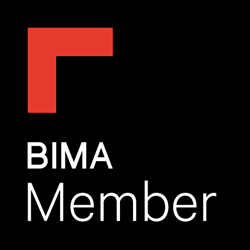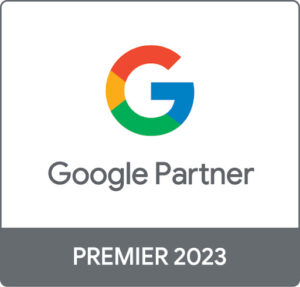Gallery Ads Bitesize – All You Need to Know!
- Designed for mobile use only
- 3 unique 30 character headings
- 4 – 8 swipeable images (each with their own 70 character long description)
- Last slide includes a call to action button
- Display URL
- You are charged by Cost Per Click or Cost Per 3rd Swipe
- Only shown at the top page position
Shopping Network, Search Network and Display Network
There are many different ways to advertise your business using ads. Strategising the goal you wish to achieve will steer which network you advertise on, including the Shopping Network, Search Network and Display Network. In this blog I will discuss the potential drawbacks of Display Ads and the newer Gallery Ads that are becoming more favourable.
The Google Search Network is arguably the most effective medium of reaching & targeting audiences while still giving the advertiser a fair amount of creative freedom. You are, however, limited to the use of words in just a few headings and descriptions and while a good wordsmith’s potential should never be underestimated, sometimes representing your brand visually is better & more effective for your goal!
For most digital marketers, the natural choice for achieving this would be implementing Display Ads. However, it is important to take into consideration potential drawbacks with display ads.
Potential drawbacks with Display Ads
Display Ads are great for brand awareness and building a presence online with your brand using variations of logos, headings and images. However, there is limited space for text and these ad types can often be seen as intrusive to users.
Attribution
Additionally, Display Ads mainly land conversions indirectly by spreading brand awareness for recall down the line, rather than through an immediate interaction. This creates issues when understanding attribution data and determining exactly how well your campaign is performing.
Coverage
Display Ads don’t appear on the actual search engine results page (SERP). Instead, they appear on the Google Display Network which covers websites, blogs, YouTube, email – and more. Just like search ads, you bid against other advertisers over whose ad will be shown in a placement. Placements are specified areas on site where the Google Display Network is allowed to show ads. You are also able to control which kind of websites your ad shows on to avoid appearing on irrelevant or inappropriate sites. This doesn’t work with all products or services, however. There are two main issues of having your ads pop up and show to a user just because they match your target audience.
Firstly, if targeted too aggressively your ads can appear intrusive and do more harm than good by constantly following a user around and even appearing multiple times on one site! In this case, especially, if this is the first time seeing your brand image, the user is less likely to consider converting.
Secondly, the goal of your display ads must be taken carefully into consideration. Unlike targeting a user on what they are searching for in the current moment, display could show up for anyone who might have shown an interest in related topics to your product a week ago. In most cases the user is not in buying mode, in particular not for expensive purchases.
For example, someone browsing the local tabloid paper could get an intrusive ad covering a large portion of their screen trying to sell a new and expensive car. Although they might have shown an interest in new cars a week ago, they are not in a purchasing state of mind, might well have already found a car or gone off the idea entirely. In short, it is difficult to target users as effectively when your ads don’t show to people who are actively searching for your services/products.
Summary
This doesn’t mean Display Ads aren’t useful of course. They are great for spreading brand awareness and remarketing to already existing customers! However, in terms of leading sales and conversions, they have been proven to perform poorly time and time again.
And that is where Google has come to our rescue with Gallery Ads. These ads allow advertisers to combine the accuracy and effectiveness of keyword based Search Ads with the descriptive and captivating visuals of Display Ads.
How do Gallery Ads work?
The way Google determines which search ad is shown on the Google Search Network (GSN) is based on an auctioning system around the keyword that has been searched. Each advertiser bids a maximum amount of money for their ad to show up at the top of a search result page but is only charged once a user clicks it.
Depending on their budget and bidding strategy, the highest bidder will generally have their ad shown on the top of the page. Whoever bids 2nd highest will have their ad shown underneath and so on. Although bidding is the most determining factor, the quality score also plays a role in how Google decides which ad will show where. It judges the relevance of your ad, how successful your previous ads have performed and your landing page quality and experience. This helps generate more accurate results as well as reducing spam & illegitimate advertisers.
Gallery Ads, on the other hand, will only show if they win the first position of the page in Google’s “auction”, and only on mobile devices. If the bid is too low for the first position, another ad will serve in its place. So make sure you include ad types other than gallery ads in your campaign to ensure that you still have an ad to show in case you don’t get the first position!
When setting bid strategies and budgets it is also important to be mindful of this position limitation, as CPC’s can quickly escalate when chasing the first position to allow for a Gallery Ad to show; so make sure to regularly check up on the running Gallery Ads!
When should you consider using Gallery Ads?
Gallery Ads are still in Beta and are only available to a few select companies and agencies, like Seed. Nevertheless, companies that could benefit greatly from a Gallery Ad’s great visual potential include:
- Travel Agencies
- Gyms
- Hotels
- Spas
- Restaurants
- Night Clubs & Bars
- Social / Sports Events
- Real Estate
- Dealerships
- Ex/Interior Decor
- Agencies
- Apps/Softwares
Both B2C and B2B can profit from Gallery Ads and the many possibilities it presents. For example, Gallery Ads can be used to showcase different travel destinations, spa services, hotel rooms, action shots from a sporting event, individual houses in a specific area – and more!
It is useful to note that although the full range of gallery will be determined further down the line of working with them, they seem to be more valuable to lead generation companies – especially as Google already has many ad types specifically designed for eCommerce in practice.
Our experience with Gallery Ads
Understandably, we were very excited to get our hands on the beta version and start implementing the new ad type into campaigns. At Seed, we started by only running a selection of gallery ads for a client providing a high-value service. The ads have been up for just over a month and the results are mixed.
In comparison to an average Click-Through-Rate of 5.06% for text ads and 1.15% for display ads in the same account, the gallery ads yielded an improved CTR, as expected. They delivered an average CTR of over 13%! This does, however, include the average swipe through rate past the 3rd slide. Unfortunately, overall, the conversion rate was lower than what we had anticipated.
We believe that this comes down to two key factors.
Firstly, these ads only appear on mobile and it has been proven that the majority of conversions are completed by desktop users. This is even more so the case for expensive purchases – like holidays, spa weekends, gym memberships, housing and a lot of the other types of services and products gallery ads are designed for. The best strategy is to “trial and error” – see which business types the ad works for and which it isn’t profitable for, however, keep in mind that high expensive purchases are most likely going to be done on a desktop.
Secondly, the format. No one can deny that the screen-filling Gallery Ads will catch a user’s attention immediately. However, they are not yet recognisable as an obvious advertisement. Instead, they share a strong resemblance to other image-related organic results which are viewed on the results page but not necessarily clicked on. This will change over time as more creative and engaging ad types emerge especially for mobile increasing the conversion rate.
Note: This is our experience with one client’s service and business model. Depending on the product, experience or service you’re promoting your results could be different!
A note for the future…
We love the gallery ads and will continue to use them for different clients, products and services. We are excited to experiment with other ways in which we could make use of the creative format and the potential it offers.
Nonetheless, I hope to see a few improvements in the future:
More unique metrics for gallery ads to help evaluate collected data more accurately. This would allow us to see the difference in people who have just swiped through the images and those who have clicked on the ad leading to a given landing page.
An incorporated logo. Similar to display ads, which offers the option to upload a logo which appears in a separate layer above the background image. Since images are processed by the human brain 60,000 times faster than words, this would help increase the brand recall and give the ad an even bolder presence.
To recap…
Undeniably, gallery ads are a great step in the right direction. It gives advertisers more creative freedom, a fresh new format to experiment with and has already been proven to be very successful with Facebook! Especially for lead generation companies this is an excellent development.
There are, however, still issues that make reading and understanding gallery ad performance less obvious and transparent and as with any new PPC development, the ideal niche for these ad types will become more evident as advertisers experiment more with them.
Pros
- Excellent for brand recognition and drawing in customers with enticing ad copies.
- Based on previous Google test performances, gallery ads get 25 % more interactions than text ads.
- Based on a model that has already proven successful for Facebook’s carousel ads which generate an average of 16x return on ad spend.
- Another step in the direction of giving Google a more social media feel to it – especially for mobile.
- More diverse and varied campaign designs.
- Excellent interaction rate – more than display and search.
Cons
- Missing a Swipe-Through-Rate and Cost-Per-Swipe metric.
- Currently difficult to thoroughly interpret the data provided by Google.
- Could be possibly confused with other image-related search results by the user, therefore reducing click-through rate.
- Gallery Ads only show on the first position – this can, therefore, be costly to push for.
- More brand recognition options for images needed, like incorporated logos.
- Currently acquires fewer impressions than display ads.








